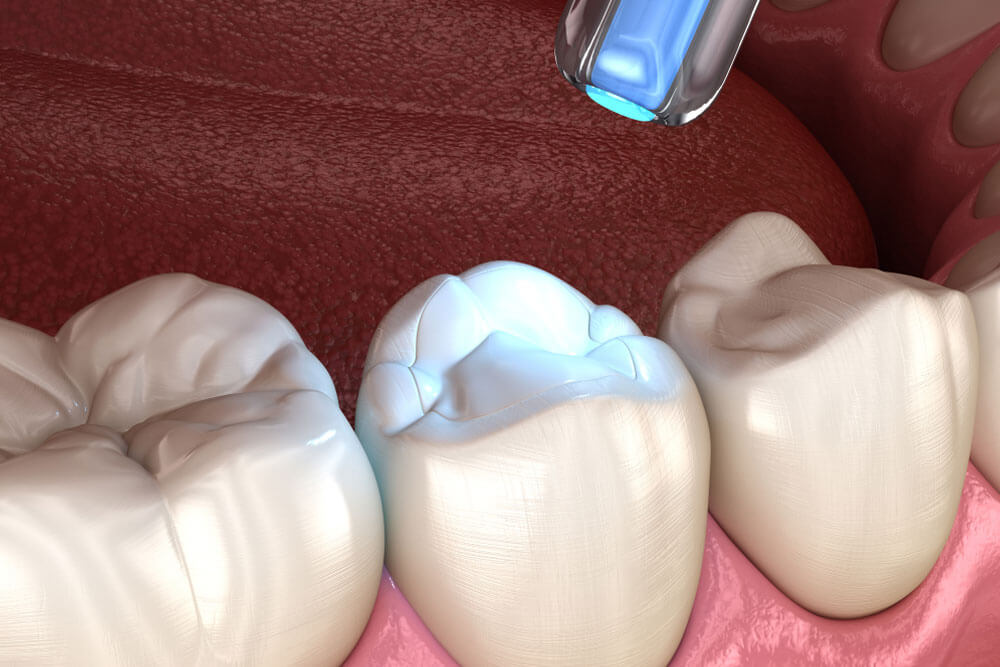Why would a dentist recommend dental fillings?
Dentists recommend dental fillings when there is a cavity present in a tooth. This procedure involves removing the cavity and placing a filling to restore the tooth.
What are the alternatives to getting a tooth filling?
Depending on the size of the cavity, alternatives include online or inlay options, often made of porcelain. The dentist chooses the appropriate material to restore the tooth.
What are the pros and cons of different filling materials?
Different types of fillings exist, including silver fillings, composite (white) fillings, and porcelain inlays. Dr. Mezun prefers tooth-colored restorations due to concerns associated with mercury and metal in silver fillings.
Can you explain the procedure for getting a tooth filling?
The procedure involves numbing, removing the cavity, and placing the filling. Tooth-colored fillings are bonded to the tooth, with several steps taken to ensure a natural appearance.
How are cavity fillings between teeth done?
The procedure is similar to other cavity fillings, but a matrix is placed for proper contouring. This ensures a natural look and easy flossing.
Is a dental filling procedure painful?
Since patients are numb during the procedure, there is no pain. Discomfort might be present with the initial tray due to tooth movement, but over-the-counter medication can help.
Can a patient request dental sedation during a filling?
Yes, dental sedation can be used for patients with severe dental phobia to ensure comfort and minimize anxiety.
Do dental fillings permanently fix cavities?
Yes, dental fillings permanently restore cavities, as the procedure removes the cavity and places the filling to fully restore the tooth.
Can dental fillings have side effects?
Sensitivity might occur if the cavity is large and close to the nerve. This usually lasts a few days and can be managed with over-the-counter pain relievers.
Do dental fillings match the patient’s tooth color?
Yes, tooth-colored fillings are selected to match the patient’s natural tooth color, ensuring a seamless appearance.
What aftercare advice is recommended after getting a dental filling?
Patients are advised to take anti-inflammatory medication for pain if needed. They should avoid biting their lips or cheeks due to numbness and refrain from eating for a few hours after the procedure.
When should a patient schedule a dental appointment for fillings?
Regular dental appointments every six months allow routine exams and X-rays, enabling the dentist to identify any cavities and discuss filling options.
Schedule an Appointment
If there’s any further questions or you want to come in for a consultation or an exam, please give us a call at (650) 367-4300 to schedule an appointment.
We are a mercury-free practice. However, many people still have silver/mercury fillings in their mouths from years past. These fillings are not particularly pleasing to the eye, and we know that by unavoidable design, silver/mercury fillings ultimately result in a weaker tooth structure. Porcelain inlays and Tooth Colored Restorations create fillings that are not only beautiful (or unnoticeable) but also add strength to weakened teeth. These restorations are esthetically pleasing and very strong thanks to new bonding technologies.
Disadvantages of Silver fillings:
Silver fillings have many drawbacks. The edges of the silver filling can wear down, become weak or break. This results in the tooth not being protected and lets cavities get started once again. With age, the metal of a silver filling expands, contracts, and can split.
Silver fillings contain 50 percent mercury. They can corrode, leak and cause stains on your teeth and gums.
Fortunately, silver fillings can safely be replaced with Tooth-Colored Restorations.
Advantages of Tooth-Colored Restorations
Composite fillings – also known as tooth-colored fillings – are dental restorations designed to be inconspicuous and natural in appearance. They blend well with the teeth and appear more natural than amalgam fillings, which are darker and more easily seen by other people. Composite fillings are made of ceramic and plastic compounds that chemically bond to the teeth.
They can be used to fill in decayed areas of the teeth, as well as to help repair chipped or broken teeth. Most dentists use composite restorations to treat the teeth closest to the front of the mouth, as they are more noticeable when patients smile. However, advancements in dental technology and the composition of composite fillings have made it possible for dentists to also use tooth-colored fillings on molars, which receive more wear than other teeth.
The result is a beautiful smile!
Your First Appointment:
- The old filling is removed along with any additional decay.
- An impression is made of your teeth. A model of your teeth is made and sent to the lab.
- A temporary onlay is placed on the tooth.
At the Lab: A resin is carefully placed into the model of your teeth. It is then designed to look natural.
Your Second Appointment:
- The temporary onlay is removed.
- A conditioning gel is placed on your tooth to prepare it for the new onlay.
- Bonding cement is placed on the tooth and a high-intensity light bonds the resin to the tooth.
- The tooth is then polished.
Your teeth are restored to a natural look and feel, they are stronger and the tooth is protected!

